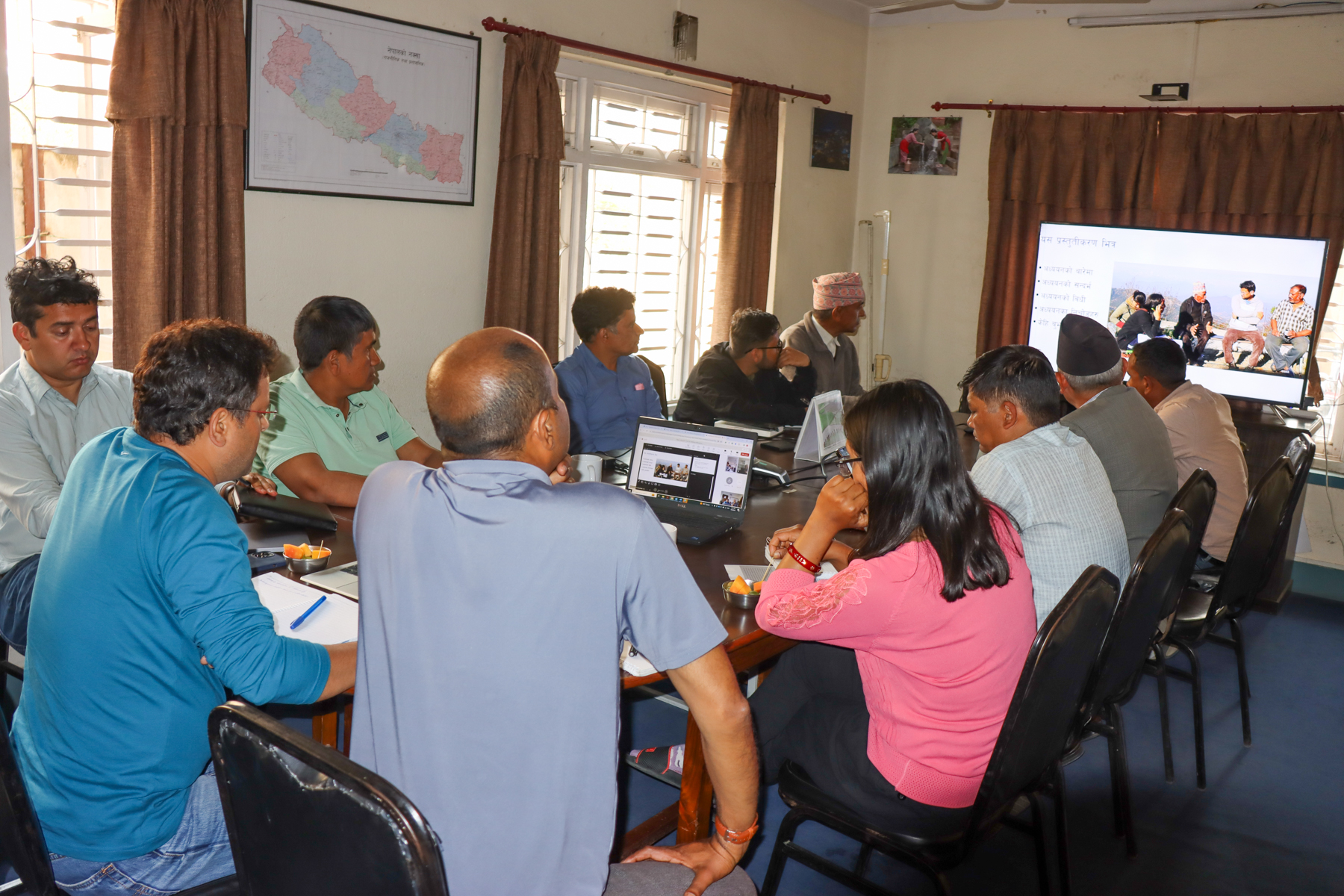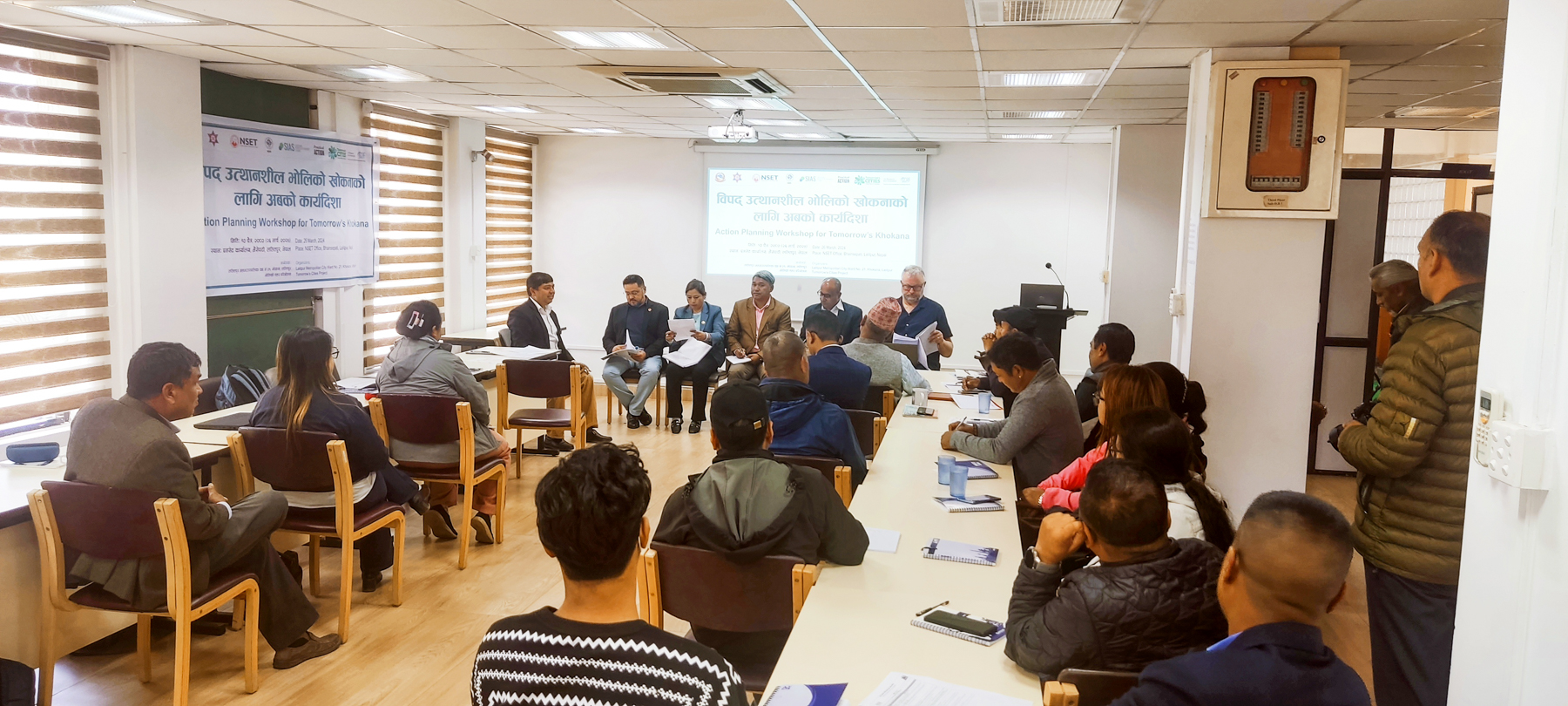SIAS in collaboration with ForestAction Nepal (FA) and Swedish University of Agricultural Sciences (SLU) organized a half-day Province Level Policy Dialogue on ‘Growing Wildlife Problems in Mid-hills of Nepal: Responding Farmer’s Voices’ on July 29, 2022 in Kathmandu. The event was coordinated by the Ministry of Forests and Environment, Bagmati Province, Hetauda. Province level stakeholders including the Provincial Forest Director, representatives from Federation of Community Forestry Users’ Nepal (FECOFUN), National Association of Rural Municipalities in Nepal (NARMIN), The Himalayan Grassroots Women’s Natural Resource Management Association (HIMAWANTI), Director of Forest Research and Training Centre (FRTC) and Divisional Forest Officers from six districts participated in the dialogue. The primary objective of the workshop was to share the preliminary findings of the research work carried out jointly by SIAS, FA and SLU since 2019 on impacts of wildlife on the rural livelihoods of mid-hills region in Nepal. The study aims to unpack the challenge of growing wildlife problems to farmers and suggest policy solutions. There were altogether 23 participants including the researchers from FA and SIAS. The workshop was facilitated by Dr. Bishnu Hari Poudyal from FA.
The event started with a brief introduction of the participants followed by briefing of the objectives of the event by Dr. Dil Khatri from SIAS. Dr. Dilli P. Poudel from SIAS then presented the preliminary findings of the study. Dr. Poudel shared empirical evidence of wildlife impacts on the rural economy in general and on farming in particular. Loss of crops, livestock and attack to human were the key wildlife damage in the study area. Dr. Paudel further highlighted some of the constraints and complications on the existing policy provisions mostly concerning wildlife relief compensations. He also shared some of the solutions suggested by the respondents that can be adopted to control the wildlife problems.
During the second session of the event, the floor was opened for discussion among the participants. The discussion was primarily focused, firstly, on the efforts made by the government so far and, secondly, the way forward to resolve the wildlife problems. All participants agreed that wildlife problem is a common issue of the mid-hills region causing a severe impact especially to the farmers. The participants also considered the increasing wildlife problem as one of the major factors for farmers abandoning their land. One of the DFO shared, “As the issue of monkey was severe, we allocated some budget but we could not use it due to lack of adequate knowledge on its control mechanism.” Participants highlighted evidencing underlying causes through in-depth research on animal dynamics considering local forest ecosystem. Some of them suggested initiating research on the wildlife issues by the government at different scales. Additionally, the participants expressed the need of conducting research on carrying capacity of local ecosystem to maintain animals outside the protected area. Likewise, Director of FRTC urged that different organizations should play an active role to lobby to advocate these issues in both the national and international forums. Similarly, representative from NARMIN shared painful experiences of the people of Arghakhanchi district and various measures adopted on his initiation as a chairperson of one of the rural municipalities there to solve the wildlife problem. He further added that despite of the several efforts, they could not find a permanent solution to their problems and hinted that unless the wildlife population is controlled, the problem will continue to rise.
Towards the end of the discussion session, Dr. Dil Khatri from SIAS summarized the key discussion points. He highlighted the need for budget allocation by the government in research focusing on population and ecological dynamics. He pointed out that relief distribution despite being a good practice, is not a permanent solution, and thus we need to work for the long- term solution. Dr. Khatri further highlighted the amendment of acts and policies to be crucial for the wildlife damage control mechanism. Finally, Bidhya Nath Jha, Provincial Forest Director, in his closing remarks highlighted that there are differences in opinions in the issue of wildlife damages and its control mechanism but we all are in the same feet on the severity of the problems and the need of urgent policy attention. He further highlighted on the need for comprehensive understanding of problem and its solutions through research.




